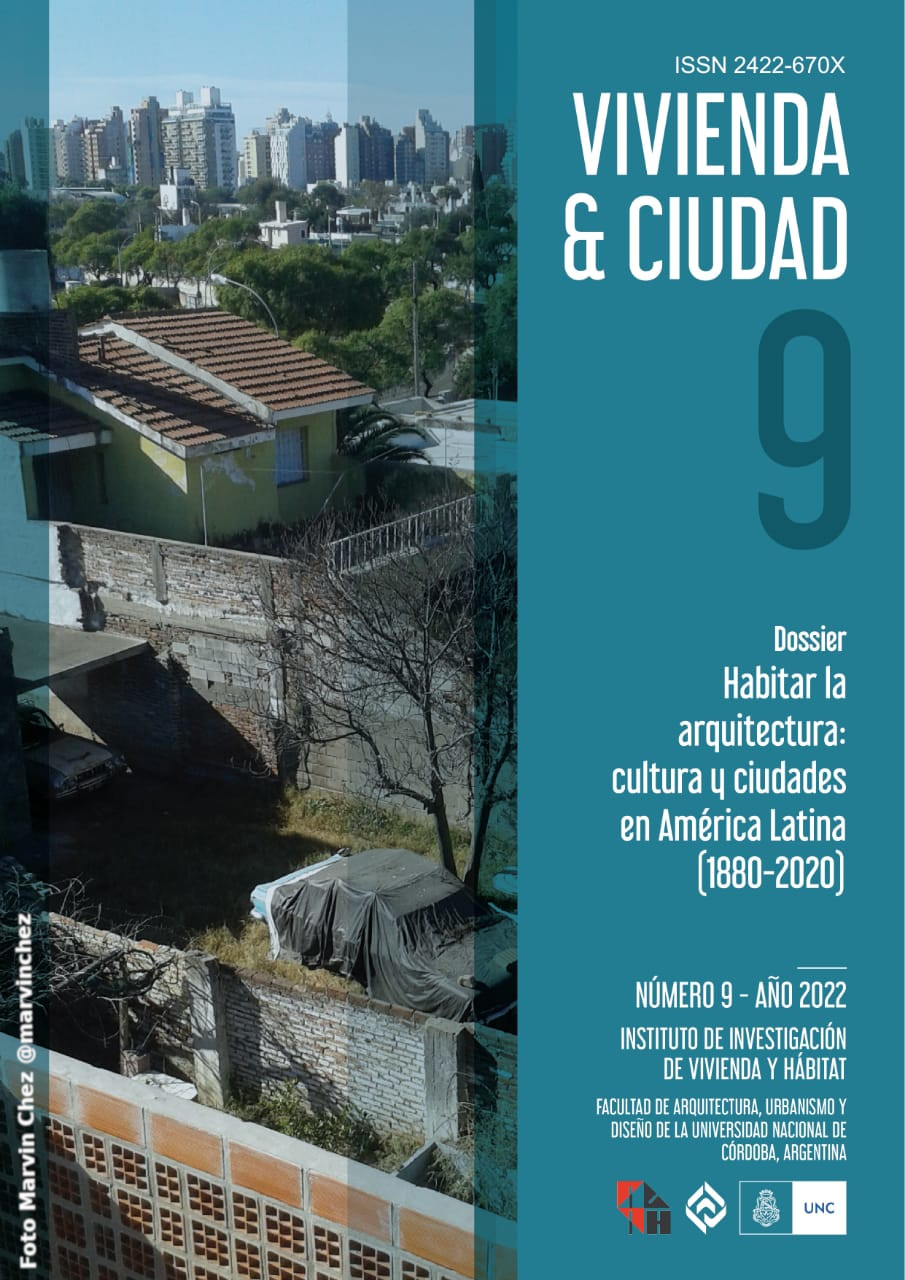The visible faces of a market
day and night at the mercado norte
Keywords:
Urban Transformations, Strategic Embellishment, City and CommunicationAbstract
This article seeks to find clues about how to inhabit the city in the representations created on and about the Mercado Norte, and to that end, we depart from a final degree project and some afterwards conclusions about the diverse experiences centered in a historic center from Córdoba City: The Mercado Norte.
This market was founded in a context of great transformation for the Latinamerican cities, at the beginning of the 20th century, under the great wave of progress. Nowadays, the market constitutes a highlight in the city weft, it is the center of one of the “Great Squares”, and is a space that concentrates diverse commercial, social and cultural activities.
This article suggests a new overview of this space in terms of the dynamics of the experiences given there, and to reflect about what notions and ideas drive the urban transformations and experiences of this area, without losing sight - or maybe establishing it as a point for comparison - of those notions and consensus that in the name of progress drove its creation.
To that end, from a materialistic and critical perspective, news published about this space will be analyzed as well as a photographic register, to try to convey the notions of “revaluation” that motivate and drive these transformations.
References
Benjamin, W. Iluminaciones I. España: Taurus, 1972.
Boito, María Eugenia. (2020). CIUDAD-COMUNICACIÓN-CULTURA Hacia una perspectiva transdisciplinaria. Perspectivas de la comunicación,13(2),43-72. Disponible en: https://dx.doi.org/10.4067/S0718-48672020000200043
Boito, E y Espoz, B. (2014). Urbanismo Estratégico y Separación Clasista. Instantáneas de la ciudad en conflicto. Puño y Letra Editorialismo de Base.
De Certeau, M. (1999). La invención de lo cotidiano II. Habitar. Cocinar México: ITESO, 2000.
Debord, G. (1967). La sociedad del espectáculo. Texto íntegro en castellano de La sociètè du spectacle, Champ Libre, 1967, traducción de Mal de ojo para el Archivo Situacionista Hispano (1998).
García Canclini, N. (1995) Consumidores y ciudadanos: conflictos multiculturales de la globalización. Grijalbo, México.
Gonzalez, S and Dawson, G (2015) Traditional Markets under threat: why it’s happening and what traders and customers can do. Report. Sara Gonzalez and Gloria Dawson, Leeds.
González, S. (2018). La gourmetización de las ciudades y los mercados de abasto. Reflexiones críticas sobre el origen del proceso, su evolución e impactos sociales. En: J. Sbicca, S. González, J., G. Ramos y R. Espelt. (Coord.), Gentrificación, privilegios e injusticia alimentaria, pp.13-25 Madrid, España: Fuhem.
Harvey, D. (2008) El derecho a la ciudad.
Martín-Barbero, J. (2015). ¿Desde dónde pensamos la comunicación hoy? Revista Chasqui, 128, sección Tribuna, marzo de 2015, pp. 6-21.
Medina, J.A, Hernández-Cordero A, Lagos S., Rangel-Trujillo F (2019) Gentrificación y alimentación en Santa María La Ribera. Publicada en Estudios Sociales Revista de Alimentación Contemporánea y Desarrollo Regional, Volumen 30, Número 55. Enero - junio 2020. Revista Electrónica. ISSN: 2395-9169
Medina F. y Álvarez M. (2009) El lugar por donde pasa la vida… Los mercados y las demandas urbanas contemporáneas: Barcelona y Buenos Aires.Estudios del hombre, 2009 - 148.202.18.157.
Ortiz M, Zanini G. (2021), “Mercado Norte: la producción social y simbólica del espacio como forma de entender la relación comunicación/ciudad”.
Stang, José Ignacio; El urbanismo como nueva disciplina en Argentina visto desde el especialista Benito J. Carrasco a través del Plan Regulador y de Extensión para la ciudad de Córdoba, 1927; Universidad Nacional del Nordeste; Cuaderno Urbano; 23; 23; 11-2017; 169-197
Downloads
Published
Issue
Section
License
Copyright (c) 2022 Macarena Ortiz Narvaja

This work is licensed under a Creative Commons Attribution-ShareAlike 4.0 International License.
Authors who publish in this journal agree to the following terms:
a. Authors retain copyright and guarantee to the journal the right to be the first publication of the work as well as licensed under a Creative Commons Attribution-ShareAlike 4 license.
b. Authors may separately establish additional agreements for non-exclusive distribution of the version of the work published in the journal (e.g., placing it in an institutional repository or publishing it in a book), with an acknowledgement of its initial publication in this journal.
c. Authors are permitted and encouraged to disseminate their work electronically (e.g., in institutional repositories or on their own website) before and during the submission process, as this may result in productive exchanges, as well as earlier and greater citation of published work (See The Effect of Open Access).
d. 4.0 International Creative Commons Attribution-ShareAlike 4.0 License.










